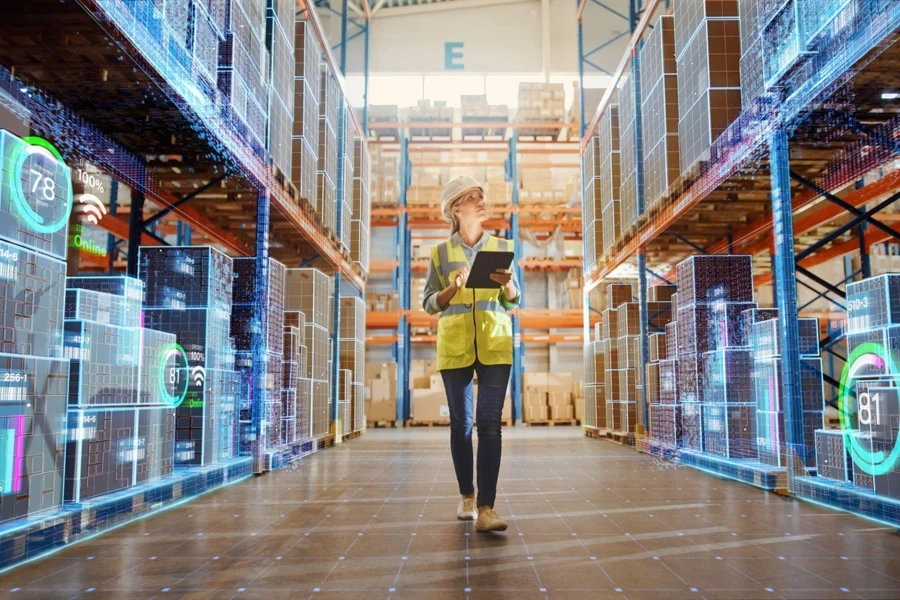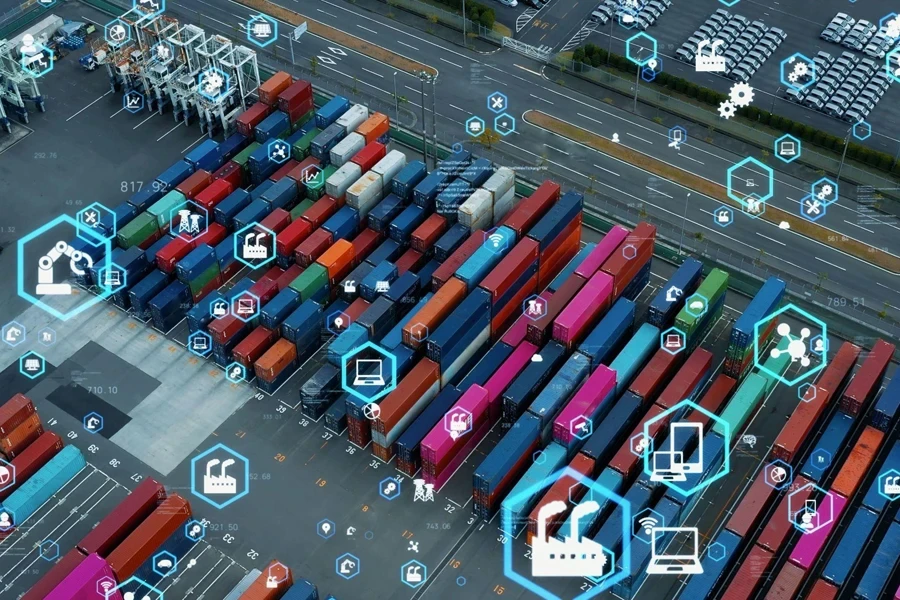Table of Contents
– Introduction
– Defining AI in supply chain
– Principle 1: AI should augment humans, not replace them
– Principle 2: The expert fusion of AI, heuristics and optimization is key
– Principle 3: Concurrency amplified by AI is a breakthrough in supply chain management
– Principle 4: The power of AI must be democratized
– Principle 5: Explainability is essential for AI adoption
– Conclusion
Introduction
The advent of ChatGPT in late 2022 has intensified the digital fog surrounding artificial intelligence (AI) in supply chain management. As CEOs face mounting pressure from their boards to accelerate AI adoption, and decision-makers recognize its essential role in remaining competitive, the drive to embrace this transformative technology is strong. However, the complex and rapidly evolving nature of AI, coupled with the heightened emotions it evokes, can leave even the most seasoned supply chain professionals feeling overwhelmed and uncertain about how to proceed. To help navigate this fog and unlock the vast potential of AI in the supply chain, we present five guiding principles for success.
Defining AI in Supply Chain
At its core, artificial intelligence is the science of computers mimicking human intelligence to solve problems. This broad field encompasses a wide array of disciplines, each contributing to the overarching goal of improving speed, precision, and elegance in decision-making by identifying patterns within vast volumes of data. From machine learning (including deep learning) to optimization, genetic algorithms, robotic process automation, generative AI, and decision management, the tools and techniques under the AI umbrella are diverse and powerful.
When applied to supply chain management, AI has the potential to revolutionize processes and enhance productivity across the board. By generating recommendations, predicting trends, surfacing insights, automating tasks, and providing unprecedented speed and scale, AI can transform the way supply chains operate. However, to fully harness this potential, it’s crucial to understand not only what AI can do but also how to effectively integrate it into existing workflows.

Principle 1: AI as a Human Augmentation Tool
The capabilities of AI are expanding at an astonishing rate, with machines now able to produce creative content, conduct complex research, and even generate art and music. These impressive feats are made possible by AI’s ability to process and learn from data on a scale far beyond human cognitive capacity. However, amid the excitement surrounding these advancements, it’s crucial to remember that there are certain things machines cannot provide, which I call the 3 C’s: context, collaboration, and conscience.
AI models, no matter how sophisticated, cannot derive meaning from context – a skill that is essential in many areas of supply chain management, such as what Zero100 thought leader Kevin O’Marah has termed “machine whispering.” Furthermore, AI cannot work collaboratively to solve problems or address critical issues like sustainability and human rights in supply chains. It is this complementary nature of human and machine capabilities that underscores the importance of using AI as a tool for augmentation rather than replacement.
The most powerful results emerge when humans and AI work together, a sentiment echoed by 93% of decision-makers in a Workday survey who believe in the importance of keeping the human in the loop when AI is making significant decisions. By leveraging the strengths of both humans and machines, supply chain professionals can achieve new levels of efficiency, insight, and innovation.
Principle 2: Expertly Fusing AI, Heuristics, and Optimization
AI’s ability to model problems at scale allows for more precise recommendations, such as improved demand forecast accuracy or better predictions of on-time delivery. This precision is also a hallmark of optimization, a field of AI well-known in supply chain management for its ability to maximize resource utilization within given constraints to achieve a specific objective, like minimizing costs. However, the scale of these problems can be immense, with optimization of a supply network potentially involving millions of interdependent variables, leading to significant computational challenges.
In some cases, supply chain professionals turn to heuristics – problem-solving models that employ practical, “good enough” solutions – to quickly generate feasible courses of action. While AI, heuristics, and optimization each offer benefits in terms of speed, precision, and elegance, they also come with trade-offs. It’s important to recognize that the newest, most advanced mathematical models aren’t always the best fit for every situation, despite what the hype might suggest.
The most elegant solutions often involve a fusion of methods, such as combining machine learning and heuristics to “warm start” an optimization model, thereby accelerating the problem-solving process. By creatively integrating the strengths of each approach, supply chain professionals can strike a balance between speed, precision, and elegance, ensuring that the right model is used for the right problem at the right time.

Principle 3: The Power of Concurrency Amplified by AI
Supply chains are intricate networks that connect multiple functions within an organization and beyond, making it challenging to optimize the entire chain by focusing on isolated links. For instance, while AI can significantly enhance forecast accuracy, the true goal is not to create highly-efficient silos but rather to align decision-making across the supply chain for faster, more cohesive responses. As a group of Canadian economists points out, unless AI-driven solutions can translate into aligned decisions throughout the supply chain, the fundamental problem of aligning demand with supply remains unsolved.
The real breakthrough in supply chain management comes not from AI alone, but from concurrency – the integration of AI into workflows to enable synchronized decision-making across the entire supply chain. By embedding AI in concurrent processes, supply chain professionals can leverage the technology’s predictive capabilities while also absorbing the inherent volatility that arises from the inevitable disruptions that supply chains face.
AI’s role in this context is to provide greater precision, speed, and elegance in predictions, while concurrency ensures that these insights are connected and acted upon in a coordinated manner. This powerful combination allows supply chains to respond more effectively to changing conditions, ultimately leading to improved overall performance.
Principle 4: Democratizing AI for Supply Chain Practitioners
To fully realize the potential of AI in supply chain management, it is essential to extend its reach beyond the exclusive domain of data scientists. While the ongoing exploration and development of new AI applications will always require the expertise of these specialists, empowering supply chain practitioners to adopt AI themselves is crucial for widespread implementation and success. The most effective AI solutions are those that can be easily understood and applied by professionals with a deep understanding of company data and business processes, rather than requiring extensive technical proficiency in AI or data science.
Although a Workday survey found that 72% of leaders believe their organizations lack the necessary skills to fully implement AI, embracing this technology doesn’t have to be an overwhelming endeavor. By choosing solutions designed specifically for those with supply chain context and business knowledge, organizations can enable their teams to leverage the insights and capabilities of AI without needing to dive into the intricacies of model building.
Democratizing AI in this manner not only ensures its adoption and use but also allows supply chain professionals to start from their current level of understanding and gradually evolve their skills over time. When selecting an AI provider, it is essential to consider their ability to support this incremental learning approach, as it will ultimately lead to more successful and sustainable implementations.

Principle 5: Ensuring AI Explainability for Trust and Adoption
In the complex and high-stakes world of supply chain management, trust is paramount. For AI to be truly embraced and adopted, it must be explainable – users need to understand how the technology arrives at its recommendations and predictions. Black box solutions that offer no insight into their inner workings can leave supply chain professionals hesitant to rely on them, especially when facing critical decisions with significant consequences.
Explainable AI provides transparency into the factors influencing its outputs, allowing users to interpret and validate the results. This not only builds trust but also enables supply chain practitioners to combine their own expertise with the insights provided by AI, leading to more informed and confident decision-making. By understanding the reasoning behind AI’s recommendations, professionals can better assess their applicability to specific situations and make adjustments as needed.
Moreover, explainability is crucial for identifying and mitigating potential biases in AI models. As these models learn from historical data, they may inadvertently perpetuate or amplify existing biases, leading to unfair or suboptimal outcomes. Explainable AI allows for the detection and correction of such biases, ensuring that the technology is being used ethically and responsibly.
Conclusion
As supply chain professionals navigate the digital fog surrounding AI, embracing five guiding principles is crucial for success: using AI as a tool for human augmentation, expertly fusing AI with heuristics and optimization, leveraging concurrency amplified by AI, democratizing AI for practitioners, and ensuring AI explainability. By striking the right balance between human expertise and machine intelligence, organizations can harness the power of AI to enhance decision-making, optimize processes, and drive innovation in an increasingly complex landscape. Staying adaptable, open-minded, and committed to continuous learning is key to confidently steering through the AI fog and towards a more efficient future.




